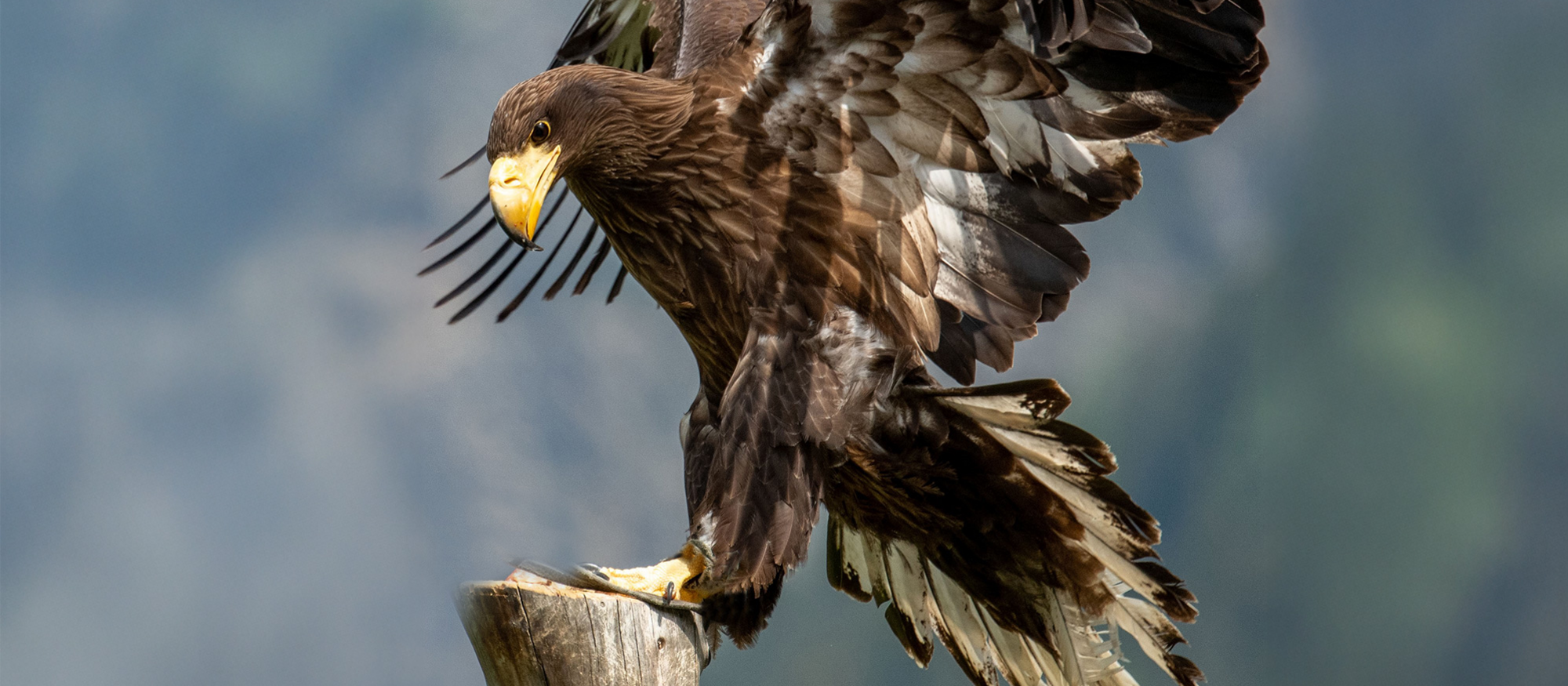Types of birds
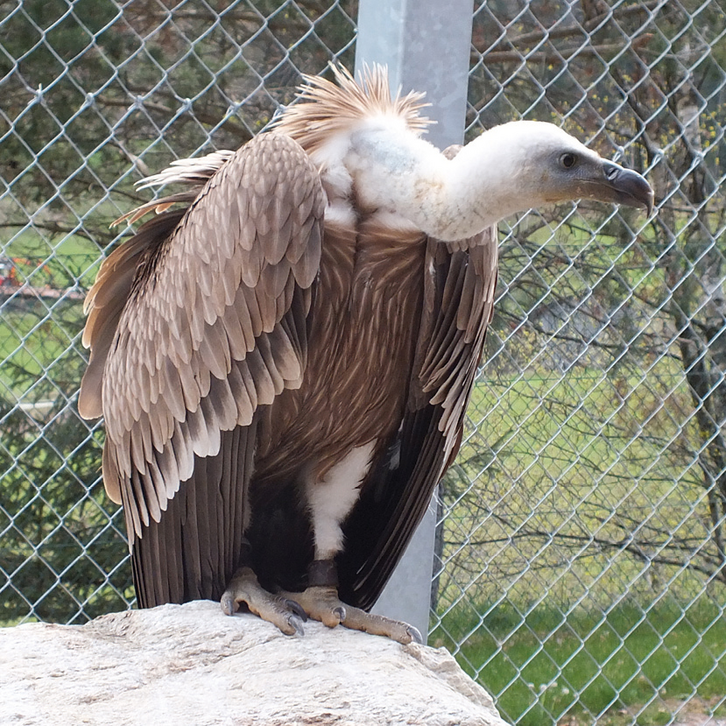
Griffon
Gyps Fulvus
Order: Birds of Prey (Accipitriformes)
Family: Hawkweed (Accipitridae)
Subfamily: Old World Vulture (Aegypiinae)
Size: 93 – 110 cm
Span: 235 – 280 cm
Weight: 6.200 – 11.300 g
The Griffon vulture has a wing span of almost 3 meters. Despite their imposing size, they are pure scavengers and unable to catch a mouse. As a scavengers, they fill an important role in the ecosystem to prevent sickness and disease. Its special characteristic is the long white neck, which in youth, is encompassed with feathers of cinnamon brown, in age a white ruff. The griffon vulture becomes sexually mature only at the age of 10 years and lays a single egg per year. Once hunted intensely and driven to the brink of extinction, Its territory’s today have disintegrated, with resettlement projects in the Alps and Pyrenees, its numbers have started to increase again, but new dangers have arisen for the birds of prey. For example in Spain 732 griffon vultures were killed by intensive use of wind energy from 2000 to 2006.
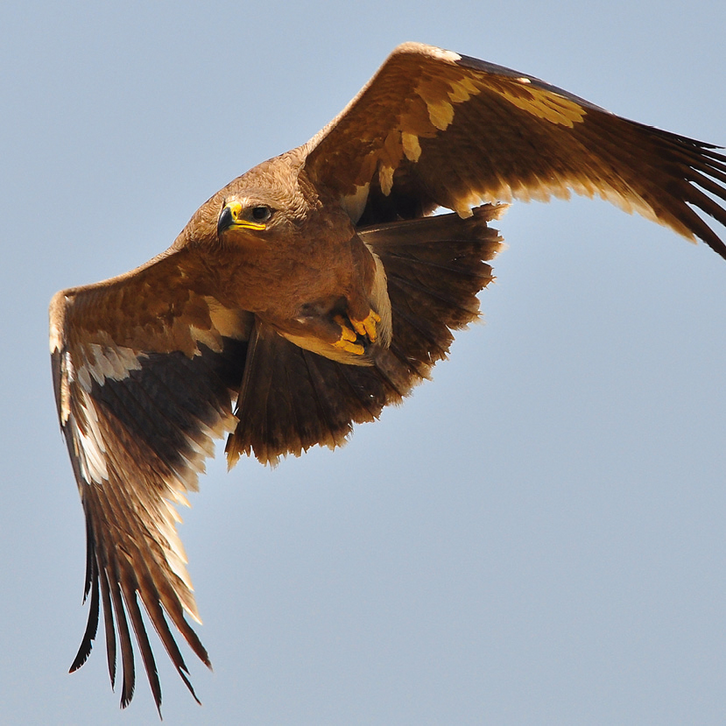
Steppe Eagle
Ayuila Nipalensis
Order: Birds of Prey (Accipitriformes)
Family: Hawkweed (Accipitridae)
Size: 60 – 80 cm
Span: 165 – 210 cm
Weight: 2.400 – 3.800 g
As a young bird, the Steppe eagle is uniformly coloured light brown. With about 7 – 8 years the Steppe eagle becomes sexually mature and turns dark brown. As with many other birds of prey, one can only recognize the sex by size – the females are about one third larger. Characteristic for the steppe eagle is the broad beak (Beck), which enables it to swallow large chunks of meat at once. As its name suggests, it comes from the steppe regions of Asia, is also a migratory bird partially native to Africa. On his journey to warm Africa, the Steppe eagle can reach heights of up to 7,900 meters. The main food consists of small mammals, such as the ground squirrel, and carrion he does not spurn
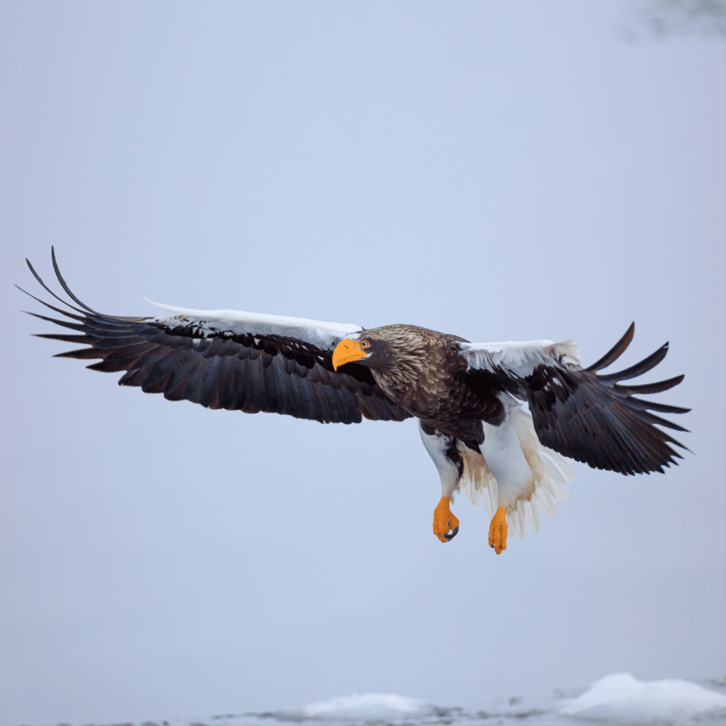
Steller‘s sea eagle
Haliaeetus pelagicus
Order: Bird of Prey (Accipitrifromes)
Family: Gyps (Accipitridae)
Size: 80 – 110 cm
Wing Span: approx. 195 – 280 cm
Weight: 5.000 – 9.000 g
As its name suggests, the Steller’s sea eagle is the largest among the sea eagle species. Its size and its strikingly large and strong orange-yellow beak are its outstanding features. It can be easily distinguished from other white-tailed eagles by its proportions: the paddle-shaped wings appear relatively short due to their width and in comparison to its
body length, whereas the wedge-shaped tail appears quite long. The plumage is predominantly dark brown to black; forehead, shoulders and thighs are strongly contrasting white. Steller’s sea eagle live close to rivers and coasts of Pacificnear Russia, during the winter months it can be found in Japan. It feeds mainly on fish, waterfowl and carrion. Like vultures, the eagle has few natural enemies. Steller’s sea eagle are monogamous, i. e. they are paired for life and live in pairs in territories during breeding season.
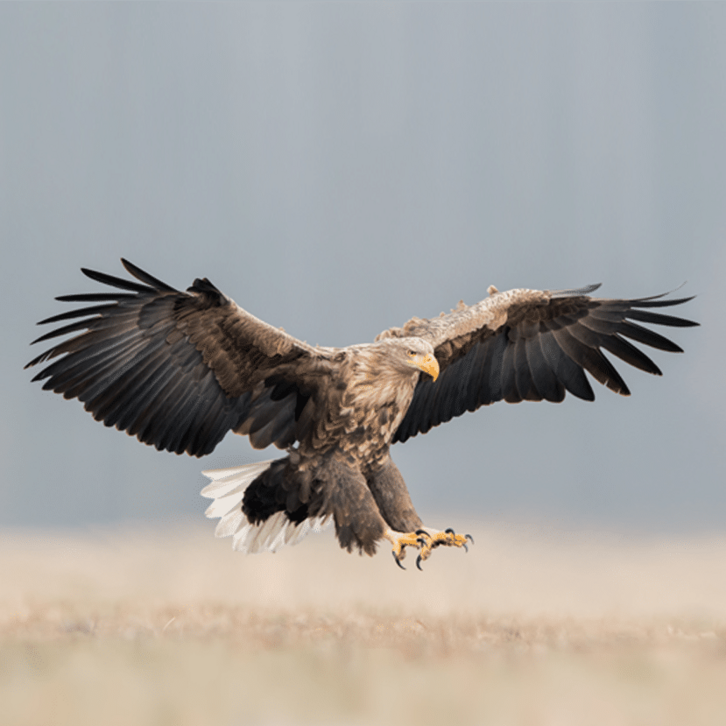
European White-Tailed Eagle
Haliaeetus Albicilla
Order: Bird of Prey (Accipitrifromes)
Family: Gyps(Accipitridae)
Size: 74 – 92 cm
Wing Span: ca. 193 – 244 cm
Weight: 3.000 – 7.000 g
European white-tailed eagle are extremely faithful birds. Once two birds have found each other, they remain together for the rest of their lives. The European white-tailed eagle primarily feeds on fish that it skilfully plucks out of the water as it flies. It is, however, also able to catch small mammals on the ground or even waterfowl in mid-air. But it also certainly does not spurn carrion. When it is young, the European white-tailed eagle is a spotted, grey-brown colour. Only when it reaches sexual maturity at the age of approximately eight it does grow its adult plumage with grey head, dark overall plumage and white tail feathers.
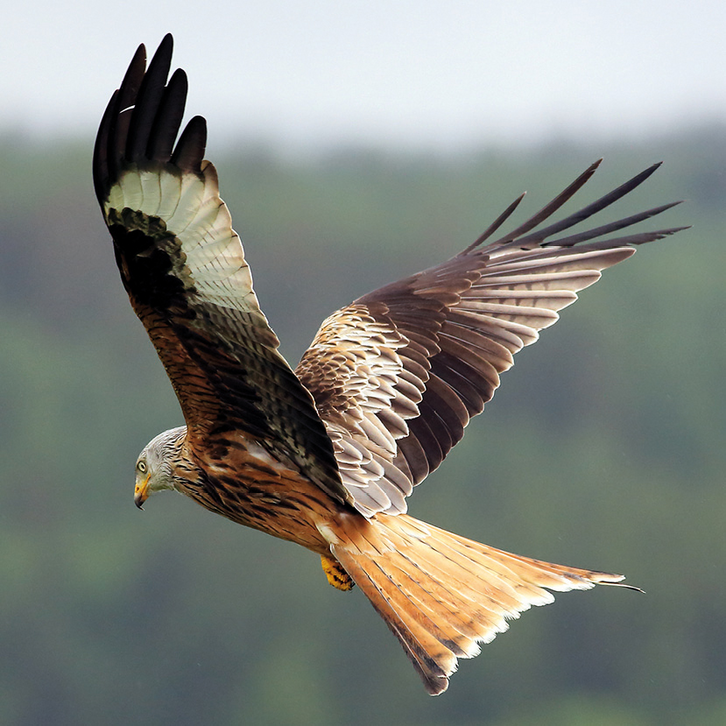
Red Milan
Milvus Milvus
Order: Birds of Prey (Accipitriformes)
Family: Hawkweed (Accipitridae)
Size: 60 – 73 cm
Span: 150 – 170 cm
Weight: 850 – 1.400 g
The Red Milan is a scavenger. You can often see them annoying other birds until they simply let go of their prey. However, as a scavengers, they are extremely tact and speedy in the air, stopping them from becoming prey himself. In contrast to its relative, the black kite. The Red Milan is not purely a scavenger , but procures its prey mostly itself. Fish is preferred, but also carrion and waste, mice, rats, moles, songbirds and insects are eaten. Most of the time though, weakened and sick animals are on the menu.
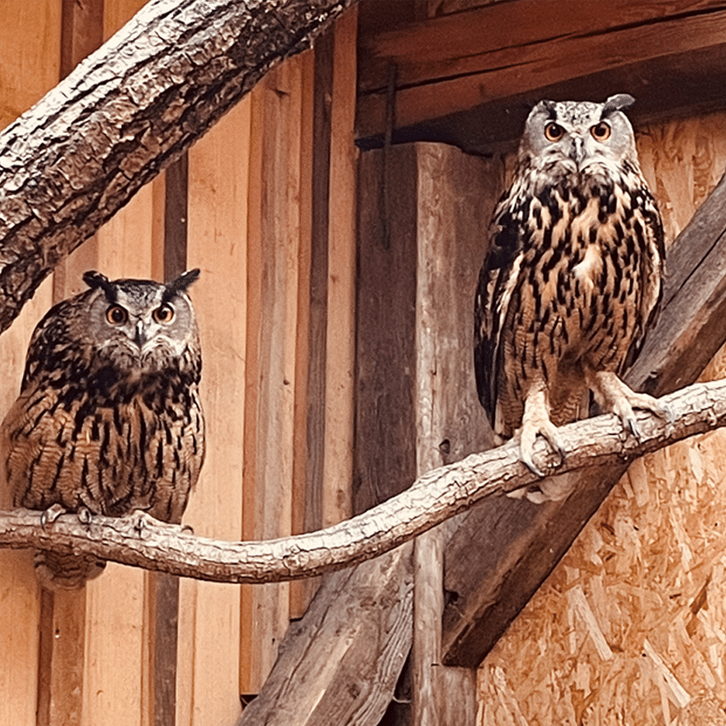
Eurasian eagle-owl
Bubo Bubo
Order: Owls (Strigiformes)
Family: Eagle-owl (Bubo)
Size: 61 – 67 cm
Wing Span: approx. 157 – 168 cm
Weight: 1.800 – 4.200 g
The European eagle-owl is the largest owl species in the world and is – unlike many other birds of prey – a nocturnal and twilight-active predator. Not only its big head and its long feather ears are particularly striking but also its distinctively large orange-yellow eyes. In Central Europa, eagle-owls are widespread in low mountainous regions and the Alps, but it is now also increasingly found in the lowlands. Its prey mainly includes hedgehogs, mice, rats, rabbits, hares, corvids, pigeons and ducks. The owl is monogamous and remains faithful to its partner until the end of its life. Well-suited breeding sites are often occupied by eagle-owls for generations. It is very territorial and defends its territory with approx. 7 km radius against conspecifics. Among its enemies are foxes and martens.
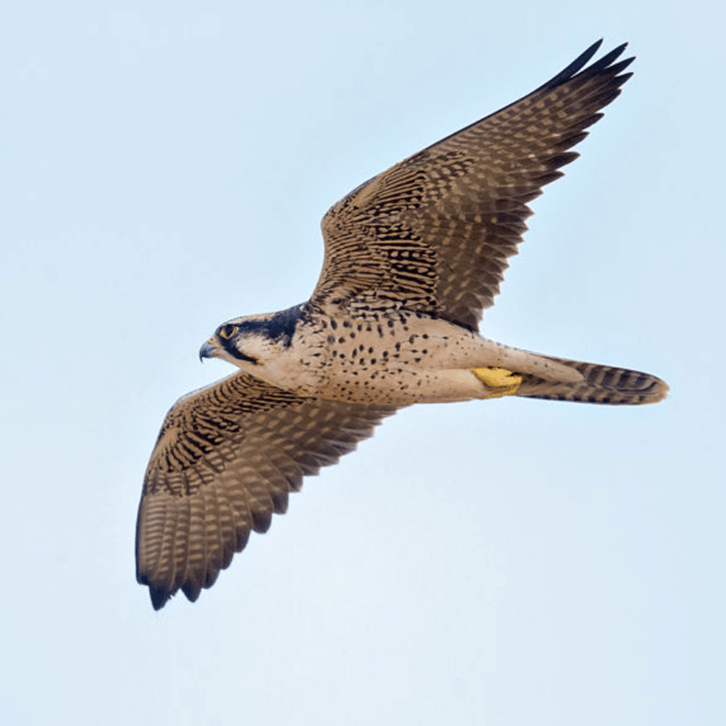
Lanner falcon
Falco biarmicus
- Order: Falconiformes (Falconiformes)
- Family: Falconiformes (Falconiformes)
- Size: 35 - 50 cm
- Wingspan: approx. 90 - 110 cm
- Weight: 500 - 1,000 g
The Lanner falcon used to be called the ‘lady falcon’. It has a comparatively gentle, nice, friendly and open nature, is inferior in hunting to other large falcons in the smallest way, and is also one of the most beautiful falcons there is. All these characteristics were very attractive to the ladies of falconry, which is why it was mainly ladies who used to go hunting with this falcon. Another speciality of the Lanner falcon is the company hunt. Unlike most falcons, which mainly hunt alone, Lanner falcons can sometimes be seen in the wild catching prey together as a pair. This rare way of hunting in the world of birds of prey is called company hunting.
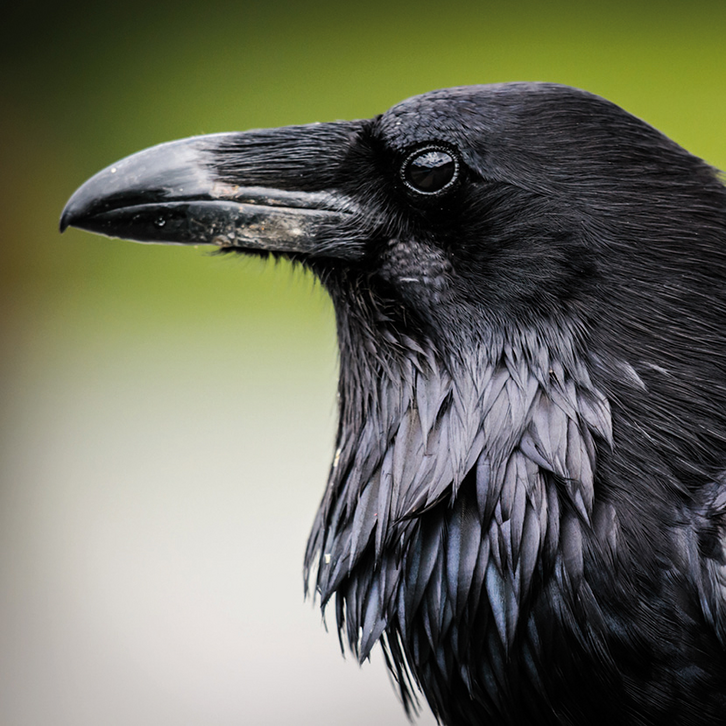
Raven
Corvus Corax
Order: Passerines (Passeriformes)
Suborder: Songbirds (Passeri)
Family: Ravens (Corvidae)
Size: 54 – 67 cm
Span: ca. 115 – 130 cm
Weight: 1.070 – 1.460 g
The Raven is the largest representative of songbirds and a true vocal artist. If you work intensively with a raven, it can also learn to speak, furthermore, one of the most intelligent animals. They are omnivore’s – and eat bread, vegetables, legumes, nuts, meat and even carrion – they spare nothing. The Raven is a classic example that a species can return after intense pursuit or hunting, the process is slow but with conservation and protection can happen. Despite intensive resettlement projects, they have become extinct in some parts of Europe, but in general the numbers have recovered.
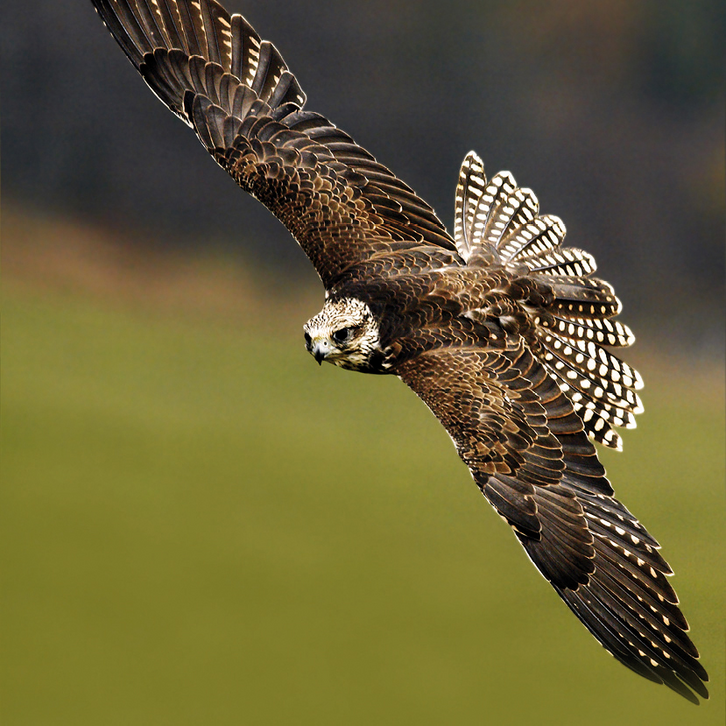
Saker Falcon
Falco Cherrug
Order: Falcon-like (Falconiformes)
Family: Hawks (Falconidae)
Size: 46 – 58 cm
Span: 104 – 129 cm
Weight: 750 – 1.100 g
The Saker falcon, also called a Gull hawk, it is the second largest falcon species in the world. They are one of the most popular hunting birds ever and is often used for the picking hunt. The Saker Falcon is a typical horizontal hunter that hunts flat and fast across the ground. In hunting flights, the Saker falcon can reach speeds of over 150 km / h in good flight conditions. He prefers flat and clear terrain, but still can be spotted in Austria – in Burgenland and along the Danube. anzutreffen.
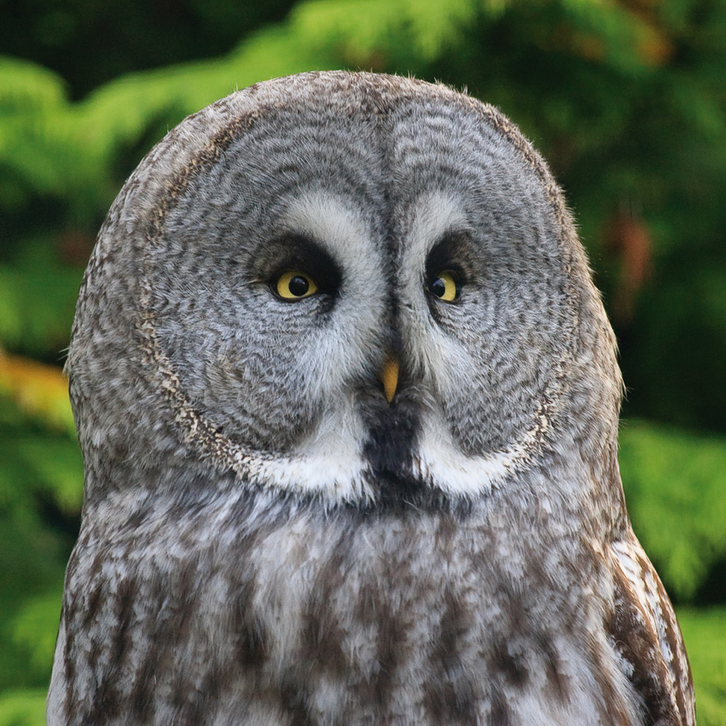
Great Gray Owl
Strix nebulosa
Order: Owls (Strigiformes)
Family: Real Owls (Strigidae)
Size: 62 – 70 cm
Span: 140 – 150 cm
Weight: 850 – 1.200 g
It is one of the largest bird species in the owl family and almost as big as an eagle owl, but weighs only half the amount. Among its trademarks include the crescent-shaped, white feather hem, which include its relatively small yellow eyes either side of the yellow beak. This creates a striking mark in the form of an X. His distinctive facial veil in fine concentric rings determine its appearance. The baby owl hatches in old birds of prey nests or on tree stumps and lives in monogamous permanent marriage. He feeds mainly on shrikes and shrews, which he often devours whole.
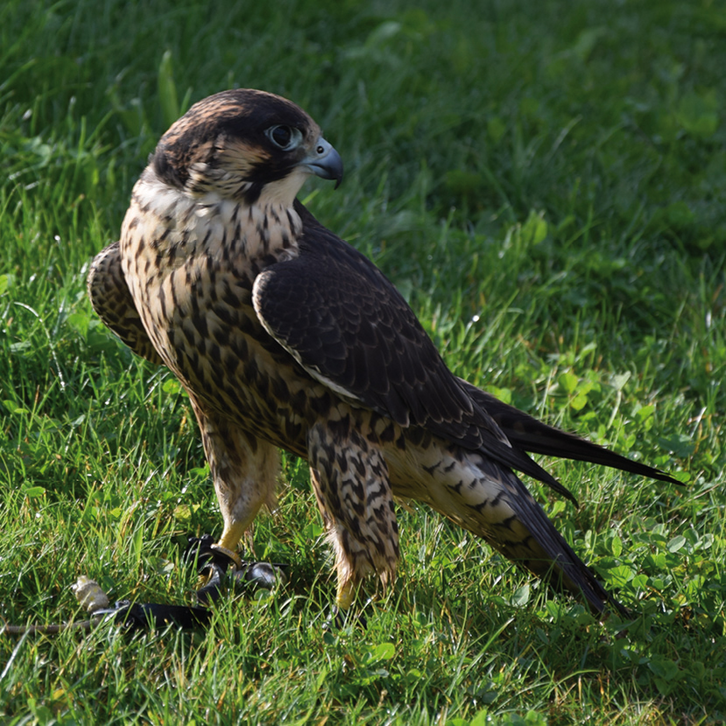
Peregrine falcon
Falco peregrinus
Order: Falcon-like (Falconiformes)
Family: Hawks (Falconidae)
Size: 37 – 51 cm
Span: 109 – 118 cm
Weight: 480 – 1.300 g
The Peregrine falcon is one of the largest representatives of the falcon family. He is a cosmopolitan and populates, apart from the Antarctic, all continents. The Peregrine falcon is primarily a rock breeder and prefers to live in mountainous landscapes and cliffs. But it is also found in “artificial” rocks, such as cities and industrial plants. The Peregrine falcon is a highly specialized bird hunter. Its food consists almost entirely of small to medium-sized birds, which it hunts in the open air. The dives from high altitudes and the achieved speeds of up to 400 km / h are spectacular
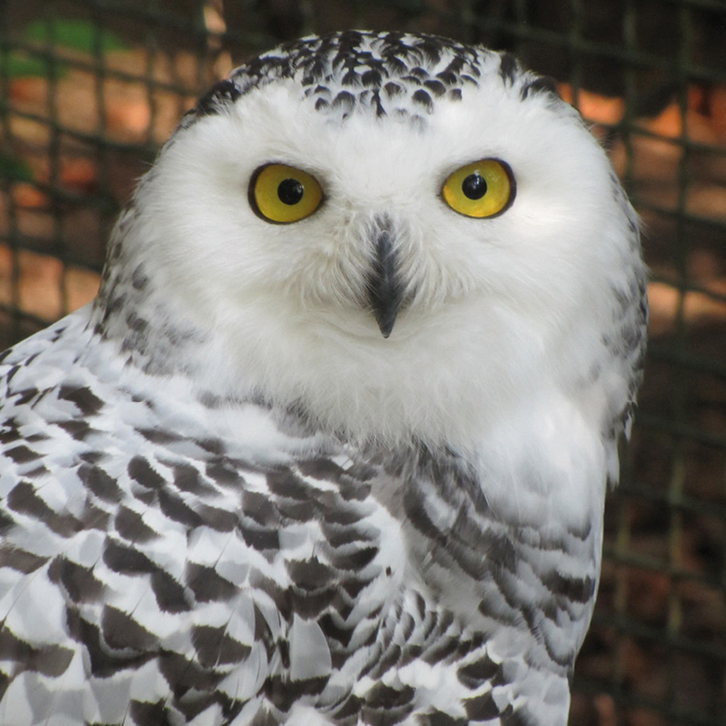
Snow Owl
Bubo scandiacus
Order: Owls (Strigiformes)
Family: Real Owls (Strigidae)
Size: 55 – 65 cm
Span: ca. 145 – 160 cm
Weight: 1.300 – 2.500 g
The Snow owl prefers the open, cold and clear terrain of the Arctic Tundra, excellently camouflaged with white feathers. It can increase up to a third of its body weight over the summer months and survive even the toughest winters. The Snowy owl is one of the few birds of prey whose gender can be recognized by their plumage. While the males are white in age, the females have some black spots (“banding”) on their white plumage. As it often stays bright or dark for weeks in the Arctic, the Snowy owl is active both at night and day. Their main prey are lemmings.
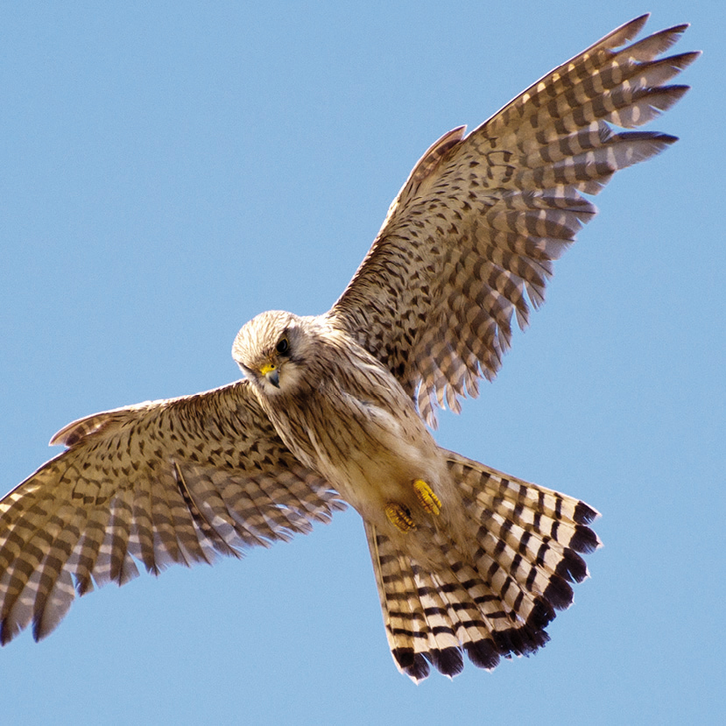
Kestrel
Falco tinnunculus
Order: Falcon-like (Falconiformes)
Family: Hawks (Falconidae)
Size: 34 – 36 cm
Span: ca. 75 cm
Weight: 130 – 230 g
The Kestrel, also known as the Shaking-falcon, is – with the buzzard – the most common domestic bird of prey. They are not endangered and are one of a few species of birds of prey, whose sex can be recognized by the plumage. While the females are uniformly coloured brown with black spots, the males as they increase in age start getting a grey head and tail. Kestrels feed mainly on mice and small insects. You can see them when you go for a drive in your car. You can usually see them hovering over fields in the air as they beat wildly with their wings with eyes on a mouse hole. At the right moment they fold their wings together and dive in on the prey.
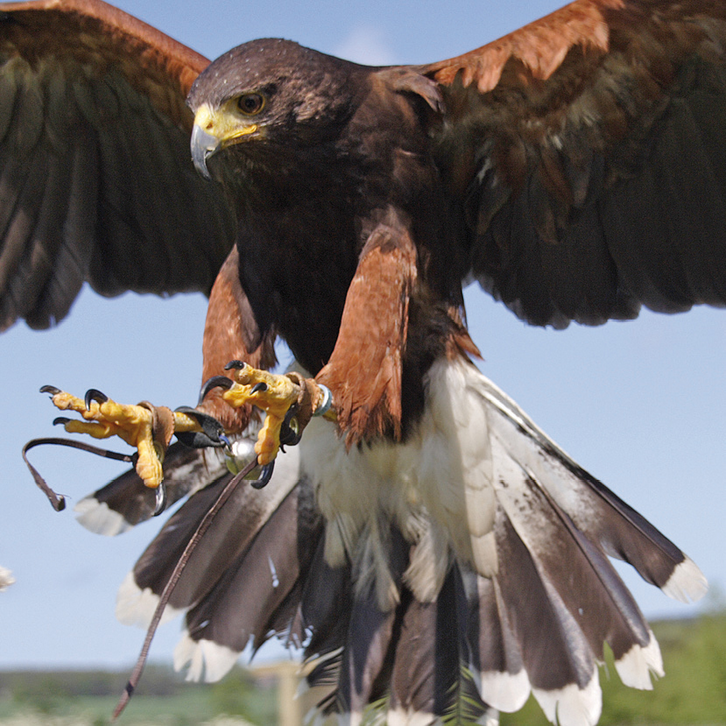
Harris Hawk
Parabuteo unicinctus
Order: Birds of Prey (Accipitriformes)
Family: Hawkweed (Accipitridae)
Size: 55 – 60 cm
Span: ca. 110 – 120 cm
Weight: 750 – 1.100 g
The Harris Hawk or Desert Hawk is a medium-sized species of prey bird and the only species of the birds of prey that hunt in groups. Their plumage is predominantly dark brown in colour, belly and chest are much lighter, and the underside of the tail stands out against their white plumage. The Harris Hawk is considered intelligent, skilled and social. He lives in small, loose family associations. Such a group (mostly 5 birds, led by a dominant female) claims a territory of about 5 km². Contrary to its name, the desert buzzard inhabits not only deserts, semi-deserts and steppes, but also wetlands and grasslands


